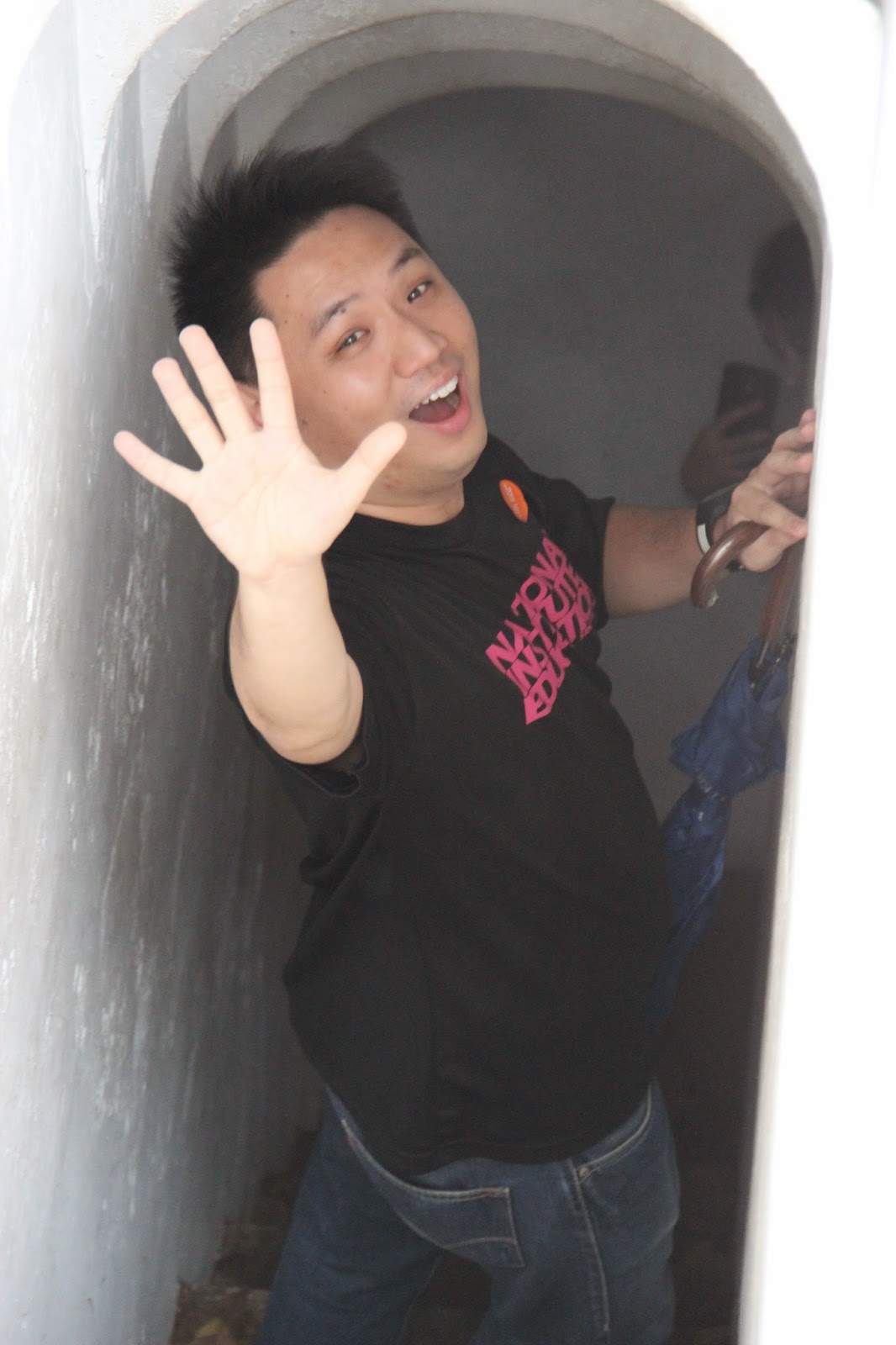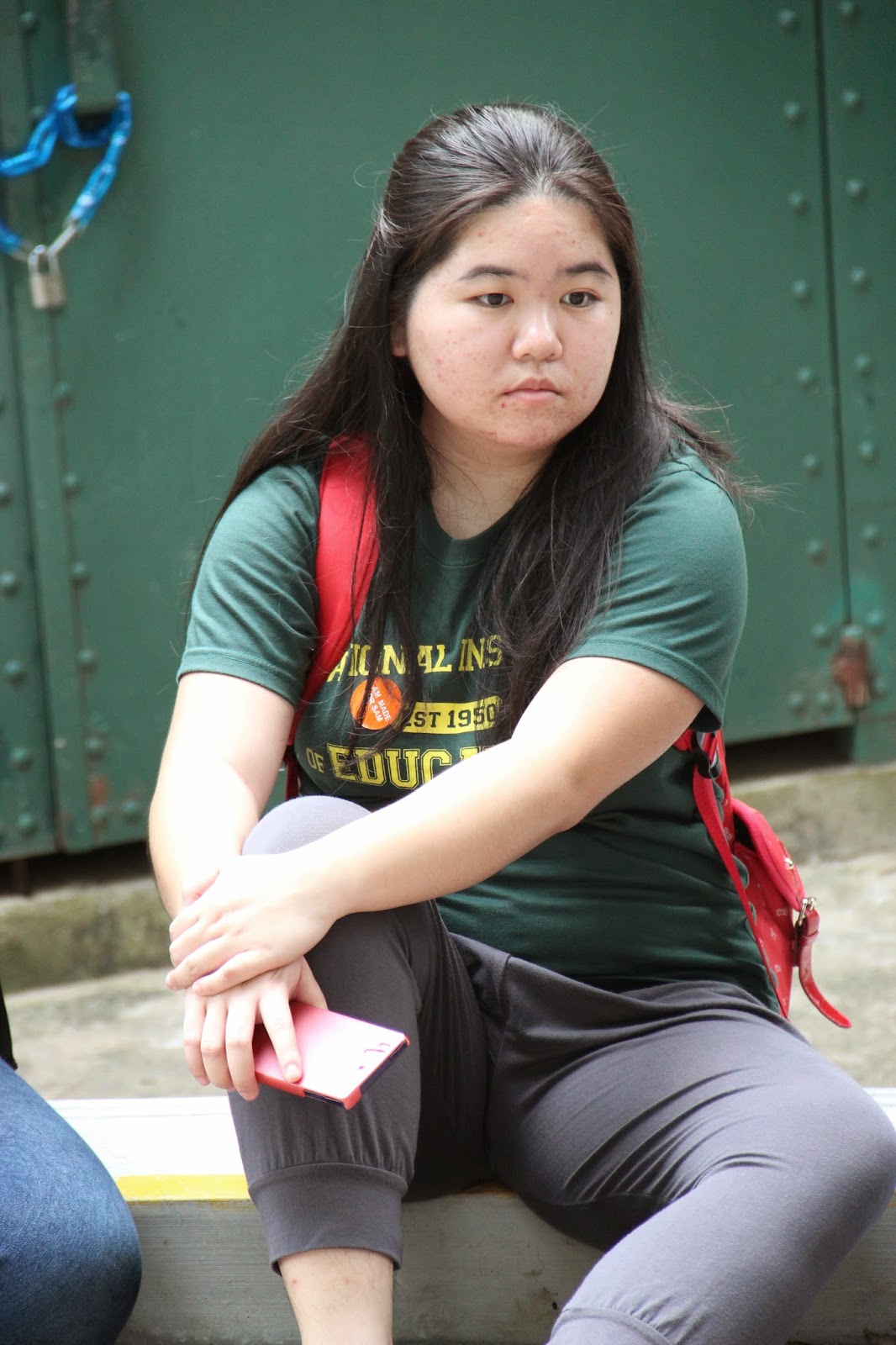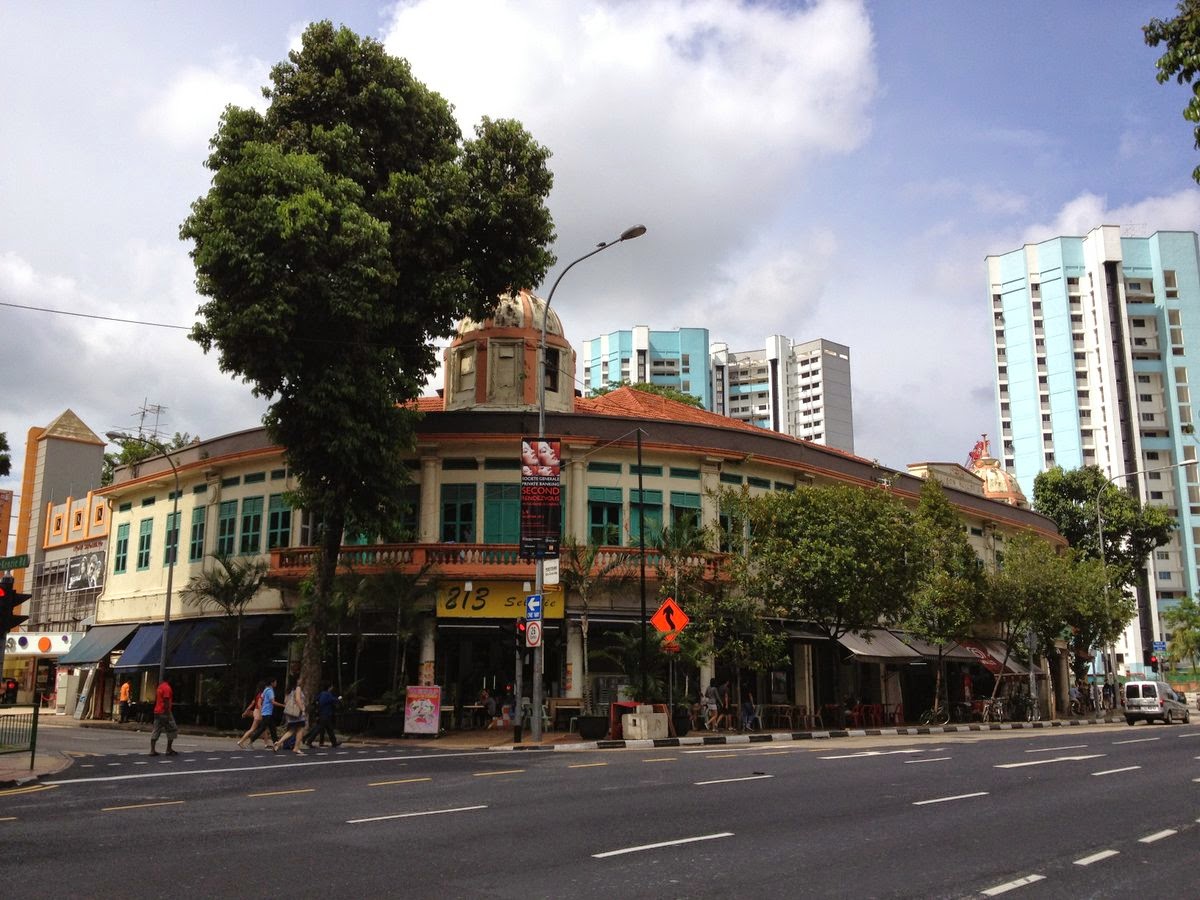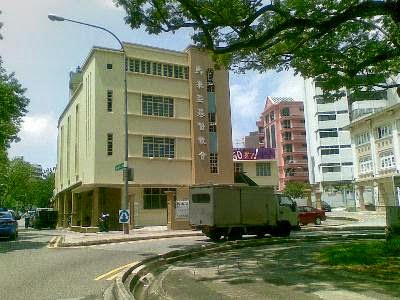JEREMY LIM

Embarking on the Bras Basah Heritage Trail was a definite eye opener! I have had the opportunity to go on this journey of discovery with Cheak, Nisa, Niswen, Patrick and Jiahui who were remarkable company to be with.
Process of Planning
The planning started out with us looking through the trail routes, working in a collaborative manner to research on the different places before reaching on a decision on the places to go.
Prior Perception of Singapore History and Heritage
I would call it an adventure as my prior perception of Singapore history and heritage was kept to my childhood days where television broadcast showed Chinese drama serials such as “Tofu Jie”, “He Ping De Dai Jia”. Family trips to the old Sentosa (before the Integrated Resort was built), Har Par Villa shaped my perception together with stories told by my Grandparents.
Further perception on Singapore was shaped by the narratives that were presented in textbooks which seemed to be uninteresting. Therefore, there was a lack of interest to go beyond the textbooks to find out more. However, i would say at present that “nothing beats researching and viewing the “live-heritage” of Singapore”.
A Change in Perception
The experience of the trail has impacted my perception of Singapore History and cultural heritage in a way that there is much more than that presented in textbooks which seemed to be “just the tip of the iceberg”. One has to get out from lectures and books in order to experience the true esscence of “doing history”. By doing fieldwork and engaging in research such as the Bras Basah trail that i embarked on, i discovered that learning and teaching history can be “interactive and fun.”
As a young nation with 50 years of “registered existence”, i feel that Singapore has built a unique cultural heritage and landscape. Through exploring on the “signs” present at the current Bugis junction, i have learnt interesting facts such as Bugis Street being a popular place known for transvestites through research. Furthermore, the location where Bugis Junction is built on now was previously the intersection of Hylam Street, Malabar Street to name two examples which are not in existence now. I would compliment Bugis Junction for their efforts to preserve heritage by putting up signages to give a brief history of the Bugis people and pre-1819 Singapore which were relatively unexplored by Singaporeans at large.
One aspect that i regret through the preparation phrase was to convince my group members not to embark on the Selegie area as everything was based on architecture.. However, after much further research, i came to realise that the architecture tells “a thousand words”. For instance, many two storey buildings were built by Indian convicts, the Ellison and David Elias buildings showed the Jewish presence in Singapore, Mount Sophia having its unique legacy of being home to many education institutes and the home to Eu Tong Sen. Therefore, i planned a family field trip, to bringing the whole “gang” on an exploration of Selegie, sharing the experience with my group members. I planned my own walking route, based on my initial research as i felt that the walking route provided was not enticing.
My portion of the blog will illustrate some of the conservations we had as a family during the trip. Please read the “preparation to the Lim Family Field Trip” before going on to the blog to get a better background idea. Furthermore, I would also suggest that the Heritage Trail brochures to include a brief historical description that invokes people’s curiosity to encourage these trails to be embarked on by both Singaporeans and tourists alike.
Conclusion:
In conclusion, the Bras Basah trail has given me an insight that Singapore History is unique like “Singlish” and can only be tasted like “wine” if artefacts or fieldwork experience are used concurrently with textbook to enable History learning to be more authentic. If i feel it this way through the experiences of preparing for the blog and the field trip, so will our students in Schools feel the same way!
CHEAK YEN HUI

What was your impression of Singapore History and cultural heritage
before going on the trail?
Singapore History: Singapore's
past events
Personally my impression of Singapore History was only based on what I vaguely remember of my History classes during my
lower secondary school days. Perhaps just names of:
1. certain places of importance
with a brief knowledge about their background and significance in
Singapore's History e.g: Bukit Chandu, Fort Canning, Singapore River,
2. more prominent pioneers such as Sir Stamford Raffles, William
Farquhar, Lim Bo Seng, Lieutenant Adnan, Elizabeth Choy
3. events
like the Japanese Occupation, Maria Hertogh RIots and
4. certain groups of people in Singapore's past
such as Force 136, Coolies, Samsui Women, Rickshaw Pullers and
Secret Societies.
All these places and people were introduced in our History textbook. I admit having underestimated the expanse and depth of Singapore History and having only a superficial understanding of Singapore's History.
Cultural Heritage: Valued
objects and qualities such as historic buildings and cultural traditions that
have been passed down from previous generations OR denoting or relating to
things of special architectural,historical or natural value that are
preserved for the nation
As for cultural heritage, places such
as Chinatown, Little India, Kampong Glam will be the first few places to cross
my mind. Preserved buildings would be Saint Andrews's Cathedral, the Armenian Church, Sri Veeramakaliamman Temple and Sultan Mosque- ( having visited these places for my past art assignments which required the
analysis of their architecture - not really history).The only artefact I know would be the
Singapore stone. That was more or less all I knew.
It is only through attending this module and doing
more research on my essay topic that I realise there is SO MUCH MORE to know about Singapore's past and sometimes with misconstrued information
that I had been believing all these years. :O
As such, I was very excited to embark on
this history trail to get to know more about Singapore's past, particularly in the area where the sole of my feet had tread on for 3 years during my training at NAFA. Furthermore with two other group members from NAFA, I
guess Bras Basah was the best place to go exploring together! (:
During our intial sharing of research and
discussions, all of us felt that the Bugis area was indeed a place with very
diverse backgrounds and cultures melded in one location. All of us were truly
satisfied with our choice of location for the Trail!
How has your experience of the trail changed your perception of Singapore history and her cultural heritage?
The whole experience was certainly an eye opener apart from my term paper and weekly lectures. Furthermore getting to experience and witness it FIRSTHAND is a really different experience altogether, compared to just reading about it in books or online. The ability to be physically present in the space and environment, to imagine people of the past were 'once there' or to re-imagine the space as it was supposed to be used for its 'original function', was a really enjoyable and insightful experience for me.
It was particularly in the Bras Basah area that I felt a deeper sense of Singapore as a multicultural society with a diversity of architectural buildings being preserved. They served significant in representing Singapore's past as it remains standing and continues interacting with the present.There is so much more to Singapore's history and cultural heritage than the usual, propounded narrative. Our people should be made aware about them!
Share some insights about Singapore's past and the way it is represented (symbolically and physically) that you have gained from the trail.
With this trail I realised we have actually been in such close proximity and interaction with our past (for example the the history of the National Library, Singapore Art Museum and even Hylam street in Bugis Junction - on the right) but we seem to be in total oblivion to them. This raised serious questions for me as I contemplated the reasons for this lack of awareness. Is there not enough emphasis placed on the history of such places? As I reflected in my posts on the places I researched, really more can and should be done to raise awareness of these histories to the general public. Inanimate signs and markers for these places are simply insufficient to catch the attention of passer-byers in a world buzzing with activity.
It also made me prepare myself and reconsider my role as a history teacher. With history as my second teaching subject, the probability of myself teaching the lower secondary pupils are much higher. From my personal experience, whatever is taught in the classroom stays with the student as unquestioned truths about Singapore's History. Its implications are great- I have indeed a grave responsibility to bear! Through this, I feel simply going on school heritage trails or field trips to Kampong Glam, Little India and Chinatown are simply insufficient. There is so much more heritage out there quietly present, just waiting for our discovery! Maybe I shall embark on a search during my holidays and perhaps propose alternative heritage trails when I get posted to school. (:
LIM JIA HUI

Prior to the trail, I strongly believed that Singapore has a rich history and a rich mix of different cultures and ethnic groups living side by side for centuries aside from the 50 years of independence. However, I felt that Singapore history has not been explored extensively as I previously intended, with more Singaporeans being more concerned about other issues than keeping in touch with the past, acknowledging it and remembering them for the sake of our future generations in understanding the country we reside in.
While there were much more information to come by for the more ‘common’ places such as Fort Canning Park and Bugis Junction, information on other places such as Albert Centre, which has stood for a few decades, were hard to come by. That was the point where I feel that we have not been invested enough to find out more about our local history and just like places with a long history such as the Old Parliament House and Raffles Hotel, these places matter too and should be considered a part of our Singapore history and identity.
My experience of the trail has made me want to cherish the monuments that our forefathers have built over the past two centuries. They served as a constant reminder of how far we have come since the early days and why they considered Singapore their home in the first place. Also, it made me believe that there’s more we can do to study in depth on lesser known monuments .
Students would be surprised that the places that they thought are boring will be surprised at how much history is behind the places they have heard. Take Bugis Junction; it was a place of settlers and entertainment more than a century ago. Students would find it pleasant in finding out that the common places they hang out may reveal a hidden side of Singapore that they never know about.
Thinking about how these places of different cultures and religions, like the Kuan Im Temple and the Sri Krishnan Temple standing side by side and next to each other for decades, no wonder many locals and tourists alike think that Singapore is a melting pot where different cultures thrive and accepted regardless of beliefs. This may not reflect the attitudes of the people back then, but it remains a living proof of different people living next to one another. With Singapore’s landscape ever changing, even more so in a country like Singapore where land is scarce, these landmarks served a purpose of
A world that is becoming more technologically advanced and a world becoming smaller and smaller by the day, all the more the need to preserve and to remember the monuments.
KHARUNNISA ISMAIL
Recently, my team members and I embarked on a heritage trail around Bras Basah area to find out more on its historical and cultural value. Among all the trails listed, Bras Bash was the trail that catches our team attention. Our team felt that this area is quite diverse in terms of places of worships and races. On top of that, it evoke much heritage that is still unknown to us or at the very least, to me.
Prior to this trip, I had little to no knowledge of the places that we were about to visit. The only information I knew was that Bugis was planted with many shopping attractions and that it encompasses many places of worship for the different religions existing in Singapore. To be honest, I did not expect Bras Basah to be listed as one of the trails. I was initially incognizant of the fact that these buildings was rich in historical and cultural value that was worth visiting which became another reason that drew me to pick this location for our trail.
Before setting out on the trail our group decided to research more on the sites listed and narrow down the number of places to visit as it was impossible for us to cover the whole trail in one day! Through the research we have done and with the information shared by each team members, I was able to learn more about Singapore history, the story behind each sites, how the names of some of these places derived and how the buildings has evolved over the years. Example, I was previously unaware that Waterloo Street was named after the Waterloo battle and that some of the places used to function as schools before it was transformed. I also had no idea that some of these buildings existed way back since the Japanese occupation period.
However based on these findings, I find that some of the places were not significant enough to be included in the trail map. Such places includes NAFA, Dance Ensemble Singapore and Singapore Calligraphy Centre. While I do find that it adds to cultural and art value of the area, it was not valuable or significant enough in educating the public on Singapore’s history. Some of these buildings does not contribute much to Singapore’s history.I find that these sites does not provide us with much knowledge on the history of Singapore except on how the development of these buildings has influence the evolvement of the area. For example with the inclusion of NAFA and Arts Theatre of Singapore under the walking route, it only shows the public how the area has emerged to become a place significant for its art contribution. I personally felt that these places are only worth mentioning but not worth visiting.
On top of that, I felt that not all buildings were helpful in educating the general public on the history of Singapore. In order for them to really benefit from this trail, some of these places requires additional research. Nevertheless this was only applicable to few areas. Majority of the places such as Fort canning and Bugis Junction include write ups and signs that provide useful information to the public. The conservation of the architectural elements of some the buildings and sites were also helpful.
Overall, embarking on this trail has not only enlighten me about the history of the area but how it has evolved over the years. To add on this trail has allowed the public and me to explore the architectural and cultural heritage that has been preserved over the years providing us with a glimpse of the past that was now considered a rarity. Regardless of the few downsides mentioned, I still feel that I have benefitted from this trail but that was largely due to the findings shared by my group members and I. Without the additional research done and with reference to only the brochure and covering all the areas mentioned, it would have been similar to a tourist jaunt that I believe would be less enriching for us. Lastly, if I were to recommend anyone on opting this trail, I would only choose certain areas to be covered such as Fort Canning, Museums trail, worship places and I would recommend them to read up more aside from just referring to the brochure provided in order to make it a fruitful trip.
WEE NI SWEN
 When we first took up the AAH103 Singapore History module, I felt pretty overwhelmed when I first took a glimpse at the assignment list. In that list was this assignment titled the ‘Heritage Trail Blog’ in which students would be required to form our own groups and embarked on a Heritage trail journey to visit historical sites and places in Singapore. My mind was in a state of panic as I thought to myself: ‘How could our young nation, this small little red dot ever possibly constitutes sufficient historical sites for us to carry out this history project!” Little would I know that such assumptions would prove me so wrong in our Heritage trail journey.
When we first took up the AAH103 Singapore History module, I felt pretty overwhelmed when I first took a glimpse at the assignment list. In that list was this assignment titled the ‘Heritage Trail Blog’ in which students would be required to form our own groups and embarked on a Heritage trail journey to visit historical sites and places in Singapore. My mind was in a state of panic as I thought to myself: ‘How could our young nation, this small little red dot ever possibly constitutes sufficient historical sites for us to carry out this history project!” Little would I know that such assumptions would prove me so wrong in our Heritage trail journey.
Apart from the usual famous touristy historical sites like Fort Canning park in which I am frequently exposed to, I thought that Singapore would be lacking in its history especially along with the rapid modernisation and globalisation of our nation over the past few decades. ‘What history do we have to speak off?’ However, I was taken aback when our group managed to visit many other existing hidden heritage sites in our urban society! We started our Heritage trail journey from Bugis Junction/Street to Albert Center/Wet Market to Guan Inn/Krishnan temple to Waterloo street to Sculpture Square to Singapore council of women's organisation to Dance ensemble singapore and calligraphy society and ended our final stop of the day at Fort canning park!
Having embarked on an extremely splendid Heritage trail with my lovely groupmates, It is very interesting to discover that our little red dot, Singapore, has actually such a rich heritage and many fascinating historical sites to offer all of us in this heritage trail project! The historical sites and remains of old archaeological buildings and places has made me realised that the early days of Singapore were nothing like the modernised Singapore we see today. Our country’s early past were of humble beginnings.We were a small fishing port called Temasek in which our livelihood depended greatly on fishing and small trade exchanges.
As a young individual born under Generation Y, I learn to be more appreciative of how our forefathers and early Singapore had come a long way through blood, sweat and tears to help transform my country into such a comfortable, modernised state that we all live in today. I too realised that Singapore actually has many unique and hidden historical sites hidden in this hustling bustling city-state hence it would be really interesting for me to take more time out in future to explore not just the common touristy-sites but also the places that have yet been discovered nor explore by many and who knows, I might just be able to come up with my own version of Singapore’s historical past based on my own research process in the near future too!
One deeper insight which I have gained from the heritage trail is with regards to the history of Fort Canning Park. It is indeed very fascinating to know more about the distinct contrast in history between early and modern-day Singapore and how this unique historical site had transformed over the past few decades. In early Singapore, the Fort was originally sited as the palaces of the 14th century Malay Kings and served as the Headquarters of the Far East Command Center and the British Army Barrack during the commencement of World War Two. However in modern day Singapore, the Fort is now reserved and protected as an iconic hilltop landmark in which although it has lost it original function as a battle site fortress, it is symbolically one of the most significant site that has witnessed many of Singapore’s historical milestone since its early founding days.
In conclusion, I had a very fun yet fruitful time spent with my awesome groupmates in this Heritage trail project in which I got to go on an interesting learning adventure with my fellow comrades to make new ‘discoveries’ of interesting and ‘unearth’ hidden unique historical sites and historical accounts/ stories in this urbanised little red dot. Thumbs up! (:














